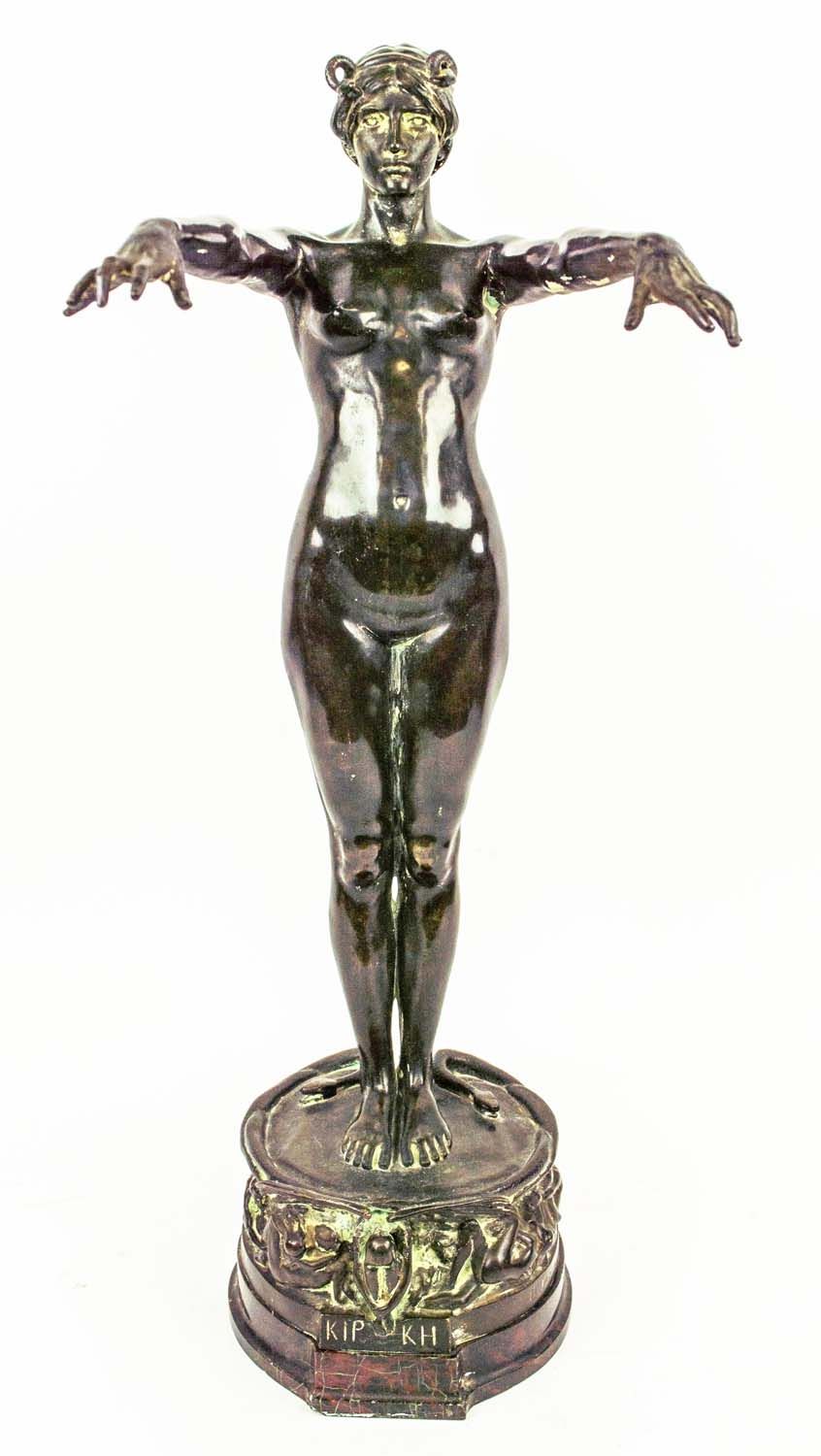
Auction Every Sunday at 11am Viewing Times & Valuation Hours
Sir Edgar Bertram Mackennal
A highlight of our upcoming Fine Sale is a recognisable sculpture by Australian sculptor and medallist Sir Edgar Bertram Mackennal (1863 - 1931). Titled 'Circe' after the Greek goddess, the sculpture symbolises femininity and grace, as well as mysticism. Mackennal's sculptures are often symbolic, which is what he later became globally renowned for. His skilfully shaped and delicate sculptures depicting the female form grew to significance after the creation of his Circe (1893). Circe is a symbolist bronze sculpture that received honourable mention at the Paris Salon of 1893 and was shown at the Royal Academy the following year.
This sculpture is a smaller scale replica of the original life size sculpture of Circe which helped greatly to establish Mackennal’s artistic career and notoriety. This smaller sculpture hints at the more intimate Victorian ideal of bringing larger museum artworks to the home and the elegant handling of the bronze and female curve and form make the piece desirable and collectible. His work was regarded as slightly controversial in its inception, due to its erotic nature. The talk of his work being slightly pornographic paid off for him, as he inadvertently became a subject of discussion in elite and bohemian circles, raising his reputation as an innovative sculptor.
During Mackennal’s early years studying in Paris, he was inspired by August Rodin (1840-1917) and took inspiration from the erotic nature of his sculptures. Mackennal then began to work with the British New Sculpture movement, where he adopted a dynamism that is evident in his works Truth (1894) and Daphne (1897). His is renowned for his stylised nude sculptures alluding to mysticism and classical mythology.
After the completion of his Circe, Mackennal was sought after for commission work, receiving commissions to produce sculptures of Queen Victoria for the United Kingdom as well as Lahore, modern day Pakistan. He was also commissioned to design a coronation medal and coinage for George V in 1910 and Royal monuments to Edward VII in 1911. After the success of his sculptures and the evident skill of his hand, Mackennal was the first Australian to become elected as an Associate of the Royal Academy in 1909, later being knighted in 1921 and subsequently becoming a full Academician in 1922.
Mackennal’s global success was primarily due to his patronage and support in Britain, but his reputable name as a sculpture continued to grow and he became an internationally acclaimed sculptor. Mackennal’s legacy as the most successful Australian sculptor of his time is a title that continues into the present day. His works echo Symbolism, Art Nouveau and Classicism as well as his role in the British New Sculpture movement.
More Articles

Not a Member? Register Now
Please enter your email address below to proceed with resetting your password.
Thursday
10am - 6pm
Friday
10am - 6pm
Saturday
10am - 6pm
Sunday
9am - 11am
Please note: We are only open for viewing on the above days.
Tuesday
10am - 5pm
Wednesday
10am - 5pm
Please note: We can only view & consign items on the above days.
Monday
9am - 6pm
Tuesday
9am - 6pm
Wednesday
9am - 6pm
Thursday
9am - 6pm
Friday
10am - 6pm
Saturday
10am - 6pm
Sunday
9am - 6pm
Auction On Sunday - 11am